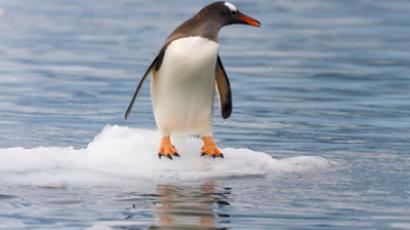Getting to the bottom of Antarctica’s mysteries

It takes a certain kind of stamina to plunge into an icy ocean, but it is all in a day's work for the determined divers of Antarctica.
A backwards plunge into frigid Antarctic waters certainly is not for the timid, but it’s a regular kind of experience for scientists working here – and all in the name of science.“The main purpose of our trip to Antarctica is to establish a foundation for monitoring different species living on the bottom of the ocean,” Boris Sirenko, a marine scientist from the Zoological Institute in St. Petersburg, told RT. “We are studying the distribution of animals that live there, and we are studying their nature.”Each day during the short summer season, a Russian research crew makes multiple trips out to sea where they get a first-hand look at what is below the surface.“In this case, one species in the same biological community stretches from a depth of five to almost 50 meters,” a member of the crew explains. “There are certain variations but mostly the picture is the same. It’s impossible to say anything now. It’s too early to draw any conclusions. We’ve got too little information – just one sectional view.”Working out in the coastal waters of Antarctica will not only help scientists identify the types of animals living here, but by coming back over time, they can study subtle changes in the environment and how the animals are affected by those changes.“In three to five years we will collect the data again in order to establish whether there have been any changes. Some animals may be gone and others may replace them. We might be able to establish why,” Boris Sirenko continued. “Maybe there are some climatic changes that will lead to changes among the populations, indicating whether it got colder or warmer here.”What they come up with can at times seem a bit questionable if not simply messy, while other times their catch is quite clear, but in all cases – important to their research. So, it is logged and shipped to Russia where it is then catalogued, and still, sometimes new discoveries are made.“Constantly!” Sirenko says. “I am cataloging many new types of mussels. My colleagues are doing the same. We are always finding new and absolutely unknown species.”













